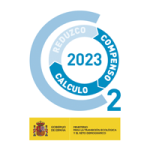Article by Marina Prat
We have been talking about mass tourism for years now, and it does not seem that this phenomenon is going to diminish in many destinations around the world. In Barcelona, for example, this debate was already quite heated in 2007, and since then it has remained latent year after year. Far from decreasing, the number of tourists continues to grow.
A few months ago, we heard news that the Catalan capital is the most overcrowded city in the world (in terms of tourism), with more than 200,000 tourists per square kilometer. The adverse effects of this phenomenon are clear: crowds at points of interest and public spaces that disrupt the daily lives of residents, degradation of social and environmental ecosystems, gentrification, increased cost of living for residents, pollution, social unrest, loss of cultural identity, among many others we could mention. But… can overcrowded areas do anything about it to prevent or stop this situation? The answer is yes, and it all starts with proper tourism planning and management.
We often forget that behind every marketing strategy, every promotion, every experience sold, and every service provider, there are people. And these people—us—are the ones who design, decide, and act, always trying our best to meet a need within a tourism ecosystem that is complex and cross-cutting in many ways.
Tourism management entities have a responsibility to promote an activity that, beyond generating economic income (and it must be said: unevenly), is sustainable, balanced, and forward-looking. Destinations no longer just have to promote themselves: they have to be managed.
But what are some initiatives that destinations can take to reduce tourist overcrowding and avoid adverse effects? Here are a few:
1. De-marketing or No-marketing strategies:
Destinations around the world have already opted to selectively reduce tourism promotion to avoid excessive numbers of tourists or unwanted tourist profiles. Some have even stopped promoting saturated places or attractions altogether, with the aim of achieving a significant and progressive deconcentration.
Similarly, other destinations have diverted funding that was historically dedicated to promotion to management.
2. Limiting and controlling tourist flows:
Regulate—and limit—tourism when it exceeds the carrying capacity of a place. This refers to capacity limits in natural spaces, monuments, and attractions of the destination, as well as the destination itself.
For spaces and monuments, this can be done through advance reservations to visit certain spaces. For the destination, limit flights or, in the case of a port, cruises, and entry points in general.
3. Seasonal adjustment and territorial decentralization:
Promoting tourism outside the high season, and in areas where tourist activity is very low or sometimes non-existent, is a strategy already widely used by many destination tourism management entities. Even so, new methods and strategies can be sought to boost and promote it even further. In this way, tourist flows can be distributed more evenly across the territory, allowing other providers to benefit at the same time.

4. Technology to monitor, anticipate, and manage:
Some destinations around the world have also opted to develop technology to help redirect these tourist flows to other areas. This is done through sensors to monitor influxes in real time, or through geolocation apps that allow tourists to be diverted to less crowded areas through digital alerts or real-time recommendations sent to their mobile devices.
In this area, it is also important to have an open data system for better service planning.
5. Citizen participation and local governance:
Perhaps the most important of all the above to consider. Including the voice of the local community in tourism management decisions is essential if we want to build a tourism system and models that truly add value in a consistent and fair manner across territories.
Listening to the voice of the citizens is key to identifying the real impacts of tourism on the destination, as it will allow us to identify the origin of the social unrest derived from overcrowding and the specific consequences that this phenomenon generates in each territory. In this sense, involving residents in periodic consultations and in territorial tourism strategy and planning are some of the actions that can be carried out.
Tourism overcrowding is not an inevitable or irreversible outcome, but rather the result of decisions that can —and should— be reconsidered. Destinations have the tools and strategies to manage tourism activity in a smart and sustainable way. This means going beyond promotion, and understanding tourism as a phenomenon that must coexist in harmony with the territory, the environment, and the local population. The key lies in planning, regulation, and above all, in engaging the local community to build a fairer, more balanced tourism model that is prepared to meet future challenges.






